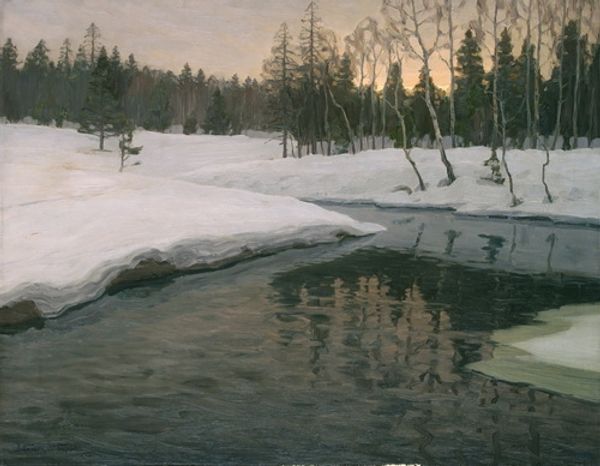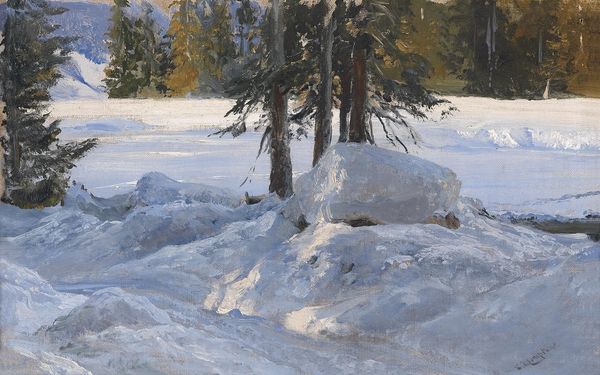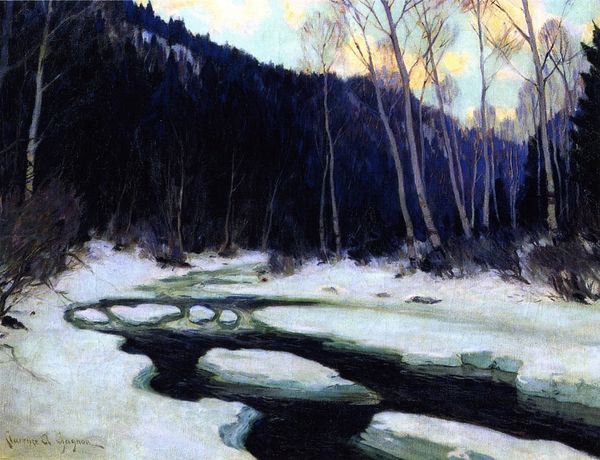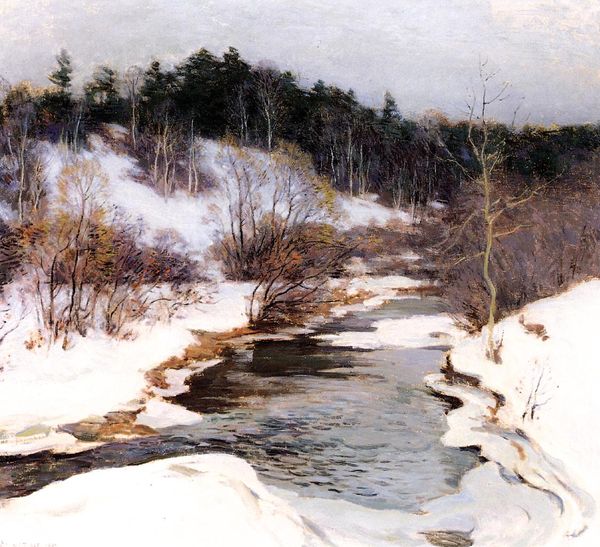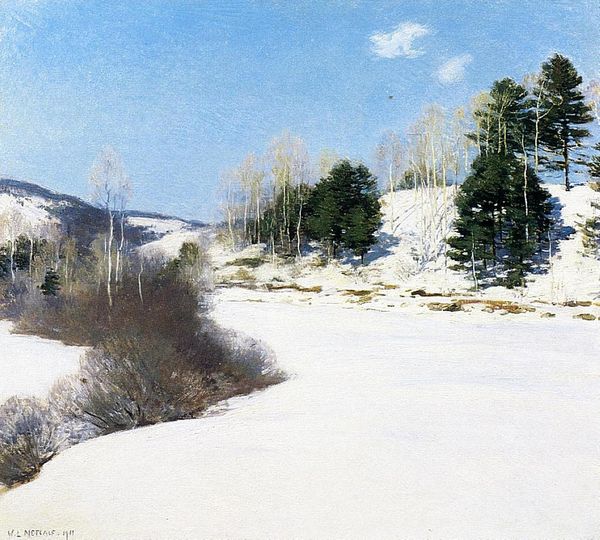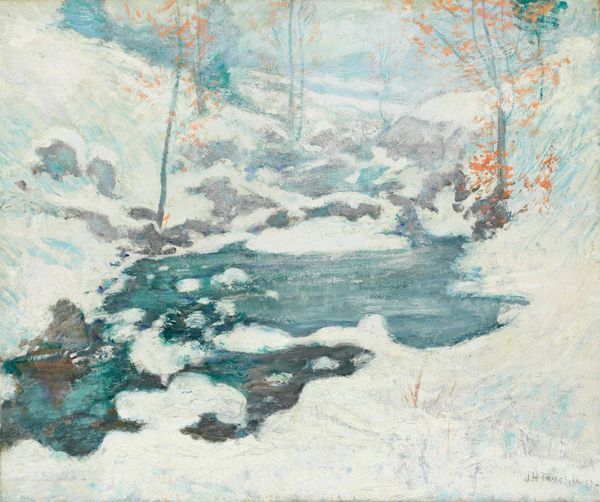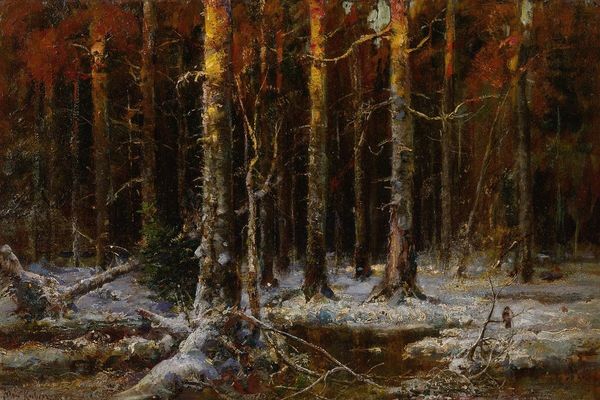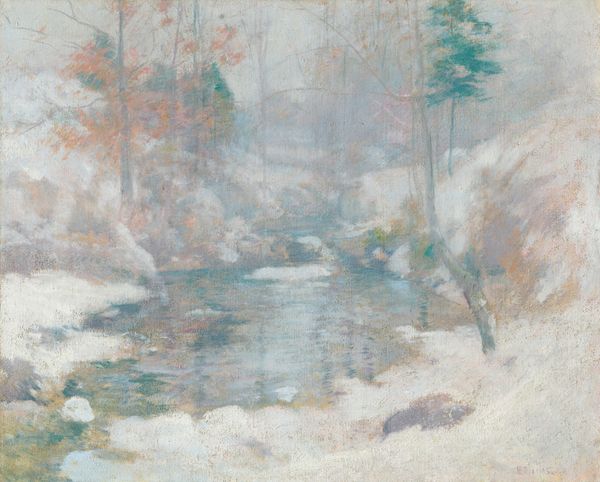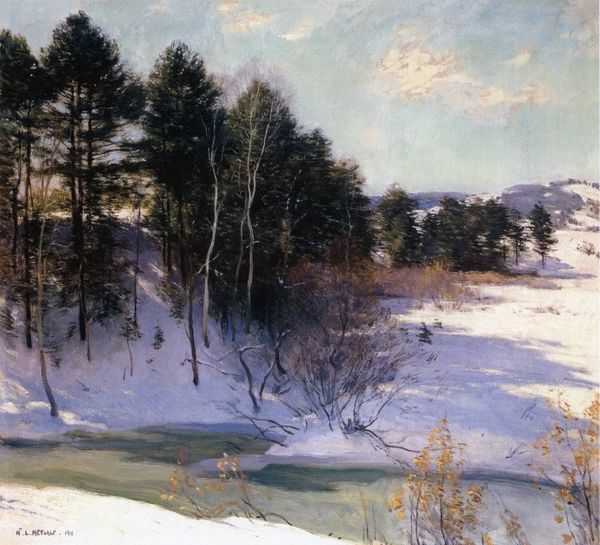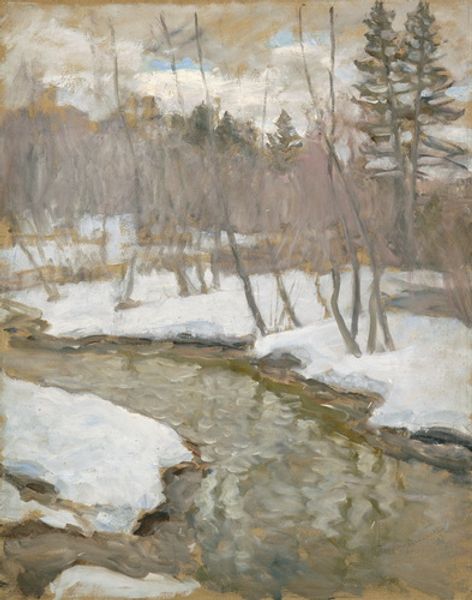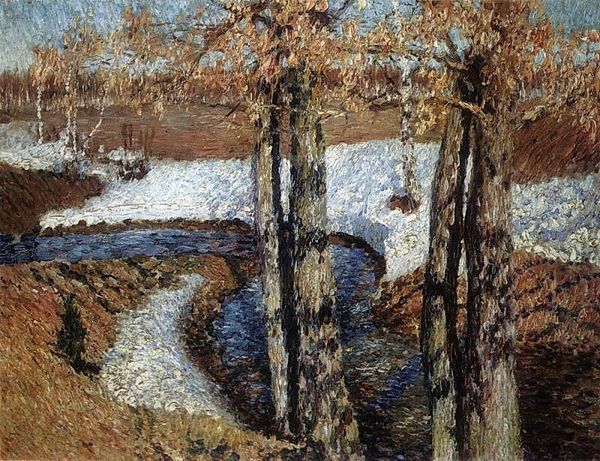
Copyright: Public domain
Curator: The somber quiet in this landscape is striking. There's something very still and internal about it. Editor: Indeed. This oil painting, entitled "Icebound," was completed in 1909 by the American Impressionist Willard Metcalf. You know, Metcalf sought to capture fleeting moments in nature, and this canvas really speaks to that aim. Curator: "Icebound" feels like a perfect descriptor. Water as the primary feature, and stillness as a way of describing what that represents to our experience and inner life. The water is still, and it is holding secrets within it. Winter often signals this period of dormancy, not just for the earth, but symbolically, a period of dormancy in our lives, perhaps inviting us to consider what's essential for a reawakening in spring. Editor: That's a lovely interpretation. The impressionistic style is worth noting here as well. Metcalf was very much influenced by French Impressionism, translating its focus on light and atmosphere to an American context. Look how he uses brushstrokes to depict the texture of the snow and the flow of the water. Curator: Precisely. The brushwork is alive. See how light and dark dapple the landscape? What I'm also considering, with that strong contrast, is the archetypal meaning that might reside there. Snow and the water element often present our deepest experiences: dreams, visions, our intuitions. Editor: And there's the societal aspect to it as well. Remember that during this period, there was an increased public interest in conservation. Artists, including Metcalf, played a crucial role in celebrating the beauty of the American landscape and reminding the urban class of what they might have been missing in cities. Curator: A crucial link, connecting us back to origins in nature! It brings up questions, doesn't it? Are we seeing a world that's untamed or being reminded of the one we lost when civilization boomed? Editor: Absolutely. Metcalf wasn’t just painting pretty scenes; he was actively participating in a dialogue about nature and our place within it, a role of public art. Curator: Thank you, because you're giving us so much insight. So much here invites contemplation, like that small sunlit patch among the trees, as a reminder of that light still lives, awaiting its return. Editor: That's such a great perspective. Ultimately, I see the painting as more than just a picture—it's an emblem for those critical junctures of social and aesthetic valuation, and its reverberations throughout a complex society.
Comments
No comments
Be the first to comment and join the conversation on the ultimate creative platform.
